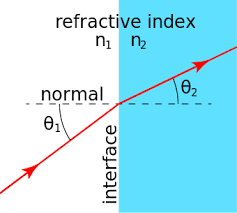 |
| Make sure your vendor's Customer Service and Tech Support are knowledgeable, experienced, and ENTHUSIASTIC. |
When choosing a vendor for process instrumentation (industrial refractometers for instance), it's imperative to include an evaluation of the vendor's Technical Support and Customer Support infrastructure. Realizing what these professionals have to contribute, and taking advantage of their knowledge and talent, will save time and money, and greatly contribute to a successful project outcome.
Understanding Why Technical Support and Customer Support are Critical
It's all about two things:- Experience
- Attitude
Experience
"If you think it's expensive to hire a professional to do the job, wait until you hire an amateur." Red Adair
By the nature of their job, Customer Service personnel are current on new products, their capabilities and their proper application. Unlike anecdotal information available on the Web, support personnel have first hand knowledge and hands-on experience. They've seen successful (and unsuccessful) product implementation scenarios and are eager to share. A brief discussion about your application with a specialist will guide you toward selecting the best equipment for the requirement. Also, because they are exposed to so many different applications and situations, Customer/Tech Support personnel are a wealth of ancillary application knowledge.
As a project engineer, you may be treading on fresh ground regarding some aspects of fully understanding the project you're working on. You may not have a full grasp on how to handle a particular challenge presented by the application. Calling upon a source with past exposure and experience to your current application prior to product selection will provide a very real, and very valuable benefit.
Attitude:
"Customer service is not a department, it’s everyone’s job." Anonymous
Choose a company that places a huge emphasis on customer service and do some due-diligence. Determine if they're merely providing lip service, or if extreme customer service oozes from the company pores.
Sam Walton, the founder of Walmart once said "The goal as a company is to have customer service that is not just the best, but legendary." Make sure the vendor you're evaluating sees things the same way. While reviews or testimonials (if there are any) can be helpful, they should be viewed judiciously. You're going to have to talk to people and get your own "gut-feel". Do the employee's seem upbeat and happy? Are they knowledgeable? If they can't answer a question, do they volunteer to connect you with someone who can? Are they enthusiastic?
As an engineer who designs or manufactures a product or process, it's strongly recommended you make the effort to research, contact, and get a first-hand feel for your prospective vendor's Customer and Technical Support Team. Learn about their product and application knowledge, their experience and their commitment to excellence. Taking the time to do this will raise the likelihood that your project will come in on time, on budget and shine brightly upon you.
As an engineer who designs or manufactures a product or process, it's strongly recommended you make the effort to research, contact, and get a first-hand feel for your prospective vendor's Customer and Technical Support Team. Learn about their product and application knowledge, their experience and their commitment to excellence. Taking the time to do this will raise the likelihood that your project will come in on time, on budget and shine brightly upon you.






